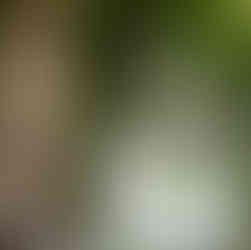Berlin's International Influence
- bethjbrown
- Jul 3, 2022
- 3 min read

Berlin is a very international city. In fact it’s the second largest Turkish city in the world outside of Turkey! This makes for a wonderfully diverse place full of music, traditions, food, and art. But that means it is also a complicated layered system of different languages, beliefs, styles of work. This can make it tricky to navigate as a student and most non-native Berliner students have had to become experts at code switching. Code switching is flipping into different aspects of your personality

depending on who you are with or where you are. Dr. Eric Denton, an American Fulbright alumni working in Berlin, said the students at his predominantly Muslim school often juggle between different identities at home and school. This extra burden placed upon students can be detrimental, but they seem figure out a way to deal with it. For Denton, teaching facts is the least important thing we do. He tries to bring difficult topics and questions to class to allow his students to examine them in a safe space where they can work through their opinions and begin to base them in historical context and facts. One way he achieves this is to give students books to allow them to see the world from other eyes, other perspectives. In fact, his students wrote a graphic novel! It''s called Mehr Als 2 Seiten and shares how students learned to overcome religious and cultural differences through a trip to Israel.

The internationalness of Berlin kept hitting home at different times. Wether it was the doner kabab places on every corner, or just hearing multiple languages walking through the grocery store. One evening we went on a walking tour with Mohammed Jadama through the Kreuzberg neighborhood, an area with many refugee and immigrant residents.. Mohammed, a refugee originally from Senegal and Gambia told us his story of his flight to Europe, and the plight of others as he guided us through different parts of his neighborhood. Mohammed was originally a reporter and photographer in Gambia when he was arrested for his work. After being imprisioned for three months his mother found where he was being kept and bailed him out. He immediately fled for Europe, first staying in Ireland before offivially applying for asylum in Italy. He disclosed the process an immigrant must take to become a German citizen, and it seems like a grueling, long process. You cannot be an official citizen in any less than 7 years, during which time he had to leave every three months to maintain his visa. As we walked he talked to us about how people from many different countries will all live and coexist well in a neighborhood like Kreuzberg. How this Gambian restaurant has been here for years and the owners are good friends of the people who own the Chinese restaurant right down the block. One of the places the co-mingling of nationalities comes to the forefront is in Gorlitzer Park. The park is a huge space, and Mohammed shared with us how immigrants and refugees from different nations tend to hang out together in different sectors of the park.
We learned about safe houses where the recent refugees might find shelter. Many of these safe houses have beautiful murals painted on the front. I am not sure if its a signifier of the what the building is, or to allow those who live there to have a sense of pride? Either way, the murals often were images of love, acceptance, and togetherness.
Mohammed maintains a small radio studio, whose broadcast he uses to share information and the stories of the recently immigrated. His power is in his story, and his ability to share it with others.
Having this first hand insight into the waves of refugees Germany has welcomed in the past fifteen years was invaluable.

























Comments